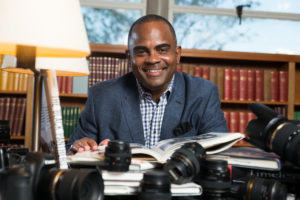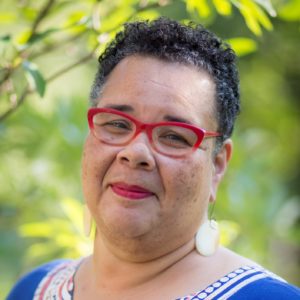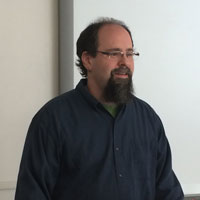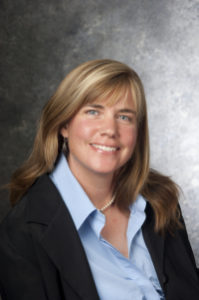transformative teaching
Select an item by clicking its checkbox
Egypt https://www.flickr.com/photos/ralphwatkins47/43570551171/in/album-72157669384150857/ What is the promise of documentaries for teaching and changing the world? Is the documentary the new pedagogical model for everyday classrooms? Is the professor of tomorrow not a lecturer or one who uses the Socratic method, forums, discussion boards, and ...
“Toto, we’re not in Kansas anymore.” So many of our students have a “Dorothy” experience when they enter theological and religious education. Our classrooms are not what they have had previous experience of. Our classrooms are not the local church, not Bible college, not the family reunion, not church ...
Every time I walk into a classroom or workshop for the first time, I hear the voices of elders in the long, Black-led struggle for justice pressing the questions: “How are you going to bring people into the movement? How are you going to plant the seeds and bring forth ...
I am a cyclist. I ride a hybrid commuter bike to work most days and have a road bike that has taken me up mountain passes and on to country roads outside of Dallas where views of fields and livestock replace the asphalt jungles of the Metroplex. I picked up ...

The Balancing Act: International Higher Education in the 21st Century
Date Reviewed: November 30, -0001
What can teachers of theology and religion learn from a text on contemporary global education? Moreover, “If our world is constantly changing, particularly with globalization, how can educators support the nature of change through curriculum, teaching, and learning, particularly in international contexts” (30)? Mary Gene Saudelli, a Canadian educator with a rich background of teaching abroad, highlights the significance of contextual considerations in twenty-first century teaching and learning through this case study of nineteen international educators at Dubai Women’s College in the United Arab Emirates. Within the pluralistic context of many of our classrooms, as well as the increased emphasis on internationalization in many of our institutions, theological and religious educators will benefit from Saudelli’s insightful analysis of contemporary educational theory and curriculum through a global lens.
Divided into three modules, the first describes the context of the study along with a discussion of contemporary theories of adult learning, including sociology of education and change theories. Module 2 presents the international educators, the Emirati learners, and the curriculum. And Module 3 explores issues within the learning context: religion, culture, society, and language. Finally, a brief conclusion captures salient lessons learned from this case study with application to twenty-first century curriculum design.
Saudelli’s analysis of contemporary learning theories in light of the global educational context is of particular significance as it represents the integrative thinking that is essential for our thinking and practice in culturally-responsive theological education. For example, she examines Knowles’ work on andragogy and Mezirow’s transformative learning theory from an international and intercultural perspective, indicating the implicit Western individualistic bias that undergirds these approaches to learning. Moreover, values such as empowerment or emancipation, lauded in contemporary adult education scholarship, may look quite different through the lens of a more restrictive Arab context.
Saudelli’s description of twenty-first century learning and its implications for curriculum design is another helpful discussion. In her words, twenty-first century teaching and learning refers to “an orientation that recognizes the incredible change that has been ushered in by virtue of a dramatic technological evolution and advancements, globalization and cross-national migration of both people and information, and intense shifting of educational needs” (63). Such curriculum is interdisciplinary, experiential, balanced, and interconnected with both local and global contexts (63ff). Moreover, its design supports the development of key skills that students require to be equipped to address the opportunities and challenges in our ever-changing world. It may be instructive to consider how these criteria could contribute to shaping theological and religious studies within our own educational institutions.
The section on faith is somewhat brief, especially given the enormous impact that religion has in the context of this study, the Arab world. And while the author does reference epistemological differences in the conclusion (179), a more robust discussion as to their significance for global education would be a welcome addition to her otherwise helpful synopsis in the final chapter.
Thus, while the particulars of this case study may be unique, the author suggests that the text can be useful, “as a way to think about how we approach internationalization in education” (12). Moreover, its fresh perspective on curriculum and educational theory through a global lens is one that is worthy of consideration for contemporary theological educators.



